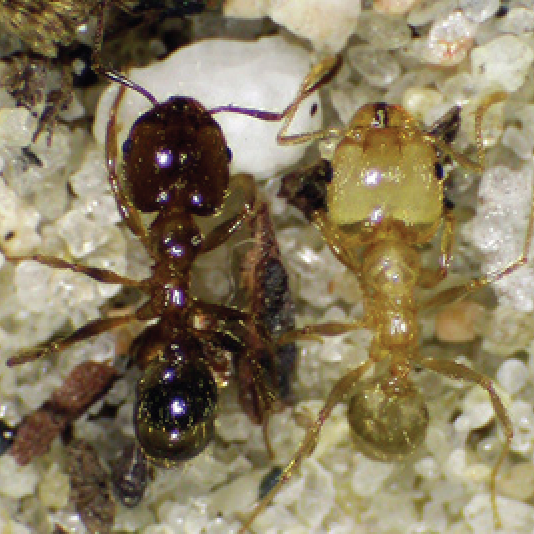
Pheidole
Overview
Pheidole is a large and diverse genus of ants within the subfamily Myrmicinae, encompassing over 1,000 described species worldwide. They are especially abundant in tropical and subtropical regions and are known for their distinctive caste system, which includes both minor and major workers (the latter often called “soldiers”).
Identification
Pheidole ants are typically small to medium in size. They are easily recognized by the stark size difference between the minor workers and the large-headed soldiers. Soldiers have disproportionately large mandibles, which they use for defense and processing food. Coloration varies widely among species, from pale yellow to deep reddish brown or black.
Habitat and Distribution
These ants are globally distributed, with the highest diversity found in the Americas, Africa, and Asia. They thrive in a range of environments, including forests, grasslands, deserts, and urban areas. Nests are usually built in soil, leaf litter, or under stones, and some species nest within rotting wood.
Behavior and Colony Structure
Pheidole colonies are typically monogynous (with a single queen) and consist of thousands of individuals. The division of labor between minor and major workers is highly specialized: minors handle foraging and brood care, while majors defend the nest and help process large food items. This polymorphism is one of the genus’s most distinctive features.
Diet and Ecological Role
Pheidole ants are omnivorous and opportunistic feeders, consuming seeds, dead insects, nectar, and other organic material. Some species act as seed dispersers or predators of pest insects, contributing to the health and dynamics of ecosystems. Their abundance and diverse roles make them key ecological players in many habitats.
Pollination Interaction
Although not primary pollinators, Pheidole ants may contribute to pollination by visiting flowers for nectar or honeydew. However, their effectiveness is generally limited compared to bees and butterflies. Some plant-ant mutualisms exist, especially in tropical regions, where Pheidole may help defend nectar-producing plants from herbivores.
Human Interaction
Most Pheidole species are harmless to humans and beneficial in controlling pests. However, a few can become nuisances when they invade homes in search of food. Their presence is often a sign of a healthy insect community, and they rarely cause structural or agricultural damage.
